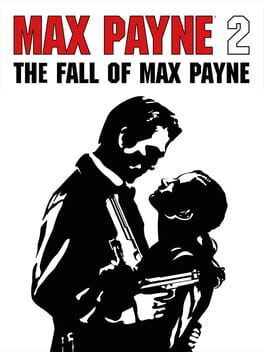"In this hall of mirrors/Built by liars, I am a pale reflection of myself"
Sam Lake said in an interview that he took screenwriting classes between Max Payne games, and it shows: the fan-fiction scuzz of the first affair giving way to, well, the kind of stuff you probably learn about in genre screenwriting classes (non-linear plots, unreliable narration, dramatic irony, etc etc).
The weightiness and variety of combat is a huge step up. It's kind of mindblowing how much more 'modern' this game feels than its 2001 predecessor: Max Payne with a bigger budget and more confident and consistent design.
This one also firmly cements what one might call Remedycore. Early on, Max goes to meet a character who lives in an abandoned funhouse based on a TV show called 'Address Unknown', a lurid and fantastical spin on Max's own story. 'Max Payne' literally steps through the tale of 'John Mirra', and we get a preview of what Remedy has tried to recreate in every one of their games since: meta-text that refracts the narrative, a 'linear sequence of scares' (to use Max's term) that reveals not just your lack of free will as a player (Remedy games are anything but 'open'), but the inability of the player-character to overcome a fate laid out for them by some higher force (a best-selling horror writer, or an interdimensional board of directors, perhaps). Every Remedy protoagonist is, in the end, just a trope. Tropes do as tropes are.
Maybe I'm just making an excuse, and in truth the writers are Remedy are making hacky material and disguising it as metatextual innovation. Or maybe simply looking into the funhouse mirror, and not thinking too much, is enough to have a hell of a time.
Or, just maybe, diving and shooting mafia types in slow motion is really fun.
Sam Lake said in an interview that he took screenwriting classes between Max Payne games, and it shows: the fan-fiction scuzz of the first affair giving way to, well, the kind of stuff you probably learn about in genre screenwriting classes (non-linear plots, unreliable narration, dramatic irony, etc etc).
The weightiness and variety of combat is a huge step up. It's kind of mindblowing how much more 'modern' this game feels than its 2001 predecessor: Max Payne with a bigger budget and more confident and consistent design.
This one also firmly cements what one might call Remedycore. Early on, Max goes to meet a character who lives in an abandoned funhouse based on a TV show called 'Address Unknown', a lurid and fantastical spin on Max's own story. 'Max Payne' literally steps through the tale of 'John Mirra', and we get a preview of what Remedy has tried to recreate in every one of their games since: meta-text that refracts the narrative, a 'linear sequence of scares' (to use Max's term) that reveals not just your lack of free will as a player (Remedy games are anything but 'open'), but the inability of the player-character to overcome a fate laid out for them by some higher force (a best-selling horror writer, or an interdimensional board of directors, perhaps). Every Remedy protoagonist is, in the end, just a trope. Tropes do as tropes are.
Maybe I'm just making an excuse, and in truth the writers are Remedy are making hacky material and disguising it as metatextual innovation. Or maybe simply looking into the funhouse mirror, and not thinking too much, is enough to have a hell of a time.
Or, just maybe, diving and shooting mafia types in slow motion is really fun.
